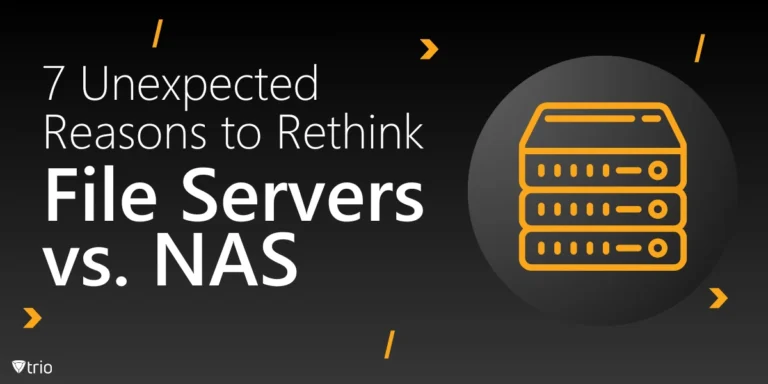Shoulder surfing in computer security refers to the act of surreptitiously observing or recording someone’s screen, keyboard, or device to obtain confidential information. This method of social engineering exploits human behavior and environmental factors to gain unauthorized access to sensitive data. As our reliance on digital devices grows, so does the potential for shoulder surfing attacks, making it a pressing concern for individuals and organizations alike.
In this comprehensive guide, we’ll delve into the intricacies of shoulder surfing, explore its various manifestations, and equip you with practical strategies to safeguard your digital life. By understanding this often-overlooked threat, you’ll be better prepared to protect your personal and professional information in an increasingly interconnected world.
Shoulder Surfing Meaning in Computer Security
To define shoulder surfing in computer security, let us explain that it is a deceptively simple yet potent method of information theft that exploits human behavior and environmental factors. At its core, this technique involves an attacker observing or recording a victim’s actions to gain unauthorized access to sensitive data. While the term might evoke images of someone literally peering over another’s shoulder, modern shoulder surfing attacks can be far more sophisticated and covert.
In the realm of computer security, shoulder surfing encompasses a range of activities aimed at capturing confidential information displayed on screens or input through keyboards. This can include observing login credentials, financial details, personal messages, or any other sensitive data that might be visible on a device’s display.
The effectiveness of shoulder surfing lies in its simplicity and the fact that it exploits a fundamental human vulnerability – the tendency to let our guard down in familiar or public settings. Unlike complex cyber attacks that require technical expertise, shoulder surfing relies primarily on opportunity and observation, making it accessible to a wide range of potential attackers.
Shoulder Surfing in Computer Security Examples
Shoulder surfing can occur in a variety of settings, each presenting unique vulnerabilities and challenges. Understanding these scenarios is crucial for developing effective prevention strategies. Let’s explore some of the most common environments where shoulder surfing poses a significant threat:
Public Transportation
Crowded buses, trains, and subways provide ideal conditions for shoulder surfing attacks. In these confined spaces, passengers are often in close proximity, making it easy for an attacker to observe screens or keyboards. The limited mobility and predictable routines of commuters create opportunities for sustained observation.
Vulnerabilities:
- Close proximity of passengers
- Limited ability to reposition or create privacy
- Predictable routines and extended travel times
Prevention Tips:
- Use privacy screens on devices
- Avoid accessing sensitive information during commutes
- Position devices to minimize visibility to others
Coffee Shops and Restaurants
These popular public spaces often serve as makeshift offices for remote workers and students. The relaxed atmosphere and extended periods of device use make them attractive targets for shoulder surfers.
Vulnerabilities:
- Extended periods of device use
- Relaxed atmosphere leading to decreased vigilance
- Often crowded with people coming and going
Prevention Tips:
- Choose seats with your back to a wall
- Use VPNs for secure connections
- Be aware of your surroundings and who might be watching
Airports and Travel Hubs
With their mix of tired travelers, long wait times, and abundant use of electronic devices, airports provide numerous opportunities for shoulder surfing.
Vulnerabilities:
- Distracted and fatigued travelers
- Extended periods of device use during layovers
- Crowded spaces with diverse groups of people
Prevention Tips:
- Use airport lounges or secluded areas for sensitive work
- Be extra vigilant when using public charging stations
- Consider using a physical privacy screen on your laptop
Office Environments
Even in seemingly secure office settings, shoulder surfing can pose a threat. Open-plan offices, shared workspaces, and areas with high foot traffic are particularly vulnerable.
Vulnerabilities:
- Open floor plans with limited privacy
- Visitors and contractors with access to work areas
- Employees multitasking and less aware of surroundings
Prevention Tips:
- Implement clear desk policies
- Use privacy screens on monitors
- Educate employees about the risks of shoulder surfing
ATMs and Point-of-Sale Terminals
Financial transactions at ATMs and retail checkouts are prime targets for shoulder surfing, as they involve the input of sensitive financial information.
Vulnerabilities:
- Direct input of PINs and account information
- Often located in public areas with high foot traffic
- Users focused on transaction, less aware of surroundings
Prevention Tips:
- Shield keypad when entering PINs
- Be aware of anyone standing unusually close
- Use contactless payment methods when possible

How to Prevent Shoulder Surfing Attacks and Best Practices
Protecting against shoulder surfing requires a multi-faceted approach that combines awareness, behavioral changes, and technological solutions. By implementing a comprehensive set of prevention strategies, individuals and organizations can significantly reduce their vulnerability to this common security threat. Here are some key best practices and strategies to consider:
Environmental Awareness
Developing a keen sense of environmental awareness is crucial in preventing shoulder surfing attacks.
Best practices:
- Regularly scan your surroundings for potential observers
- Choose seating positions that minimize screen visibility to others
- Be cautious in crowded or high-traffic areas
- Trust your instincts if you feel someone is watching you
Physical Barriers
Creating physical barriers can significantly reduce the risk of visual eavesdropping.
Techniques:
- Use privacy screens on laptops, smartphones, and tablets
- Position your body to shield your screen or keyboard
- Utilize cubicle walls or portable privacy panels in open office spaces
- When using ATMs or point-of-sale terminals, cover the keypad with your hand
Technological Solutions
Leveraging technology can provide an additional layer of protection against shoulder surfing.
Recommended tools:
- Implement biometric authentication methods (e.g., fingerprint, facial recognition)
- Use password managers to reduce manual password entry
- Enable two-factor authentication for sensitive accounts
- Employ screen filters that limit viewing angles
Behavioral Adjustments
Modifying certain behaviors can make it more difficult for shoulder surfers to access sensitive information.
Recommended practices:
- Avoid accessing sensitive information in public spaces when possible
- Use abbreviated or coded information for sensitive data
- Practice touch typing to reduce visual cues when entering passwords
- Be discreet when entering PINs or passwords in public
Policy Implementation
For organizations, implementing clear policies can create a culture of security awareness.
Key policy elements:
- Establish clear desk policies to minimize exposed sensitive information
- Require the use of privacy screens in open office environments
- Implement strict visitor policies and escort procedures
- Conduct regular security awareness training for employees
Secure Authentication Methods
Adopting secure authentication methods can reduce the risk of credential theft through shoulder surfing.
Recommended approaches:
- Use multi-factor authentication whenever possible
- Implement single sign-on (SSO) solutions to reduce password entry
- Consider passwordless authentication methods
- Regularly update and strengthen passwords
Device Security
Ensuring that devices themselves are secure can provide an additional layer of protection.
Best practices:
- Enable automatic screen locking after short periods of inactivity
- Use encrypted storage for sensitive data
- Implement remote wipe capabilities for lost or stolen devices
- Regularly update operating systems and security software
Public Wi-Fi Precautions
When using public Wi-Fi networks, additional precautions are necessary to protect against shoulder surfing and other threats.
Recommended measures:
- Use a VPN to encrypt your internet traffic
- Avoid accessing sensitive accounts on public networks
- Disable auto-connect features for public Wi-Fi networks
- Verify the legitimacy of public Wi-Fi networks before connecting
Social Engineering Awareness
Understanding and recognizing social engineering tactics can help prevent combined attacks.
Key points:
- Be cautious of unsolicited requests for information
- Verify the identity of individuals requesting access to sensitive areas
- Be wary of attempts to create distractions in sensitive environments
- Report suspicious behavior to security personnel
Regular Security Audits
Conducting regular security audits can help identify and address vulnerabilities.
Audit focus areas:
- Physical security measures in office spaces
- Employee adherence to security policies
- Effectiveness of current prevention strategies
- New technologies or methods to enhance security
The Role of Mobile Device Management (MDM) Solutions in Prevention and Detection
MDM platforms are incorporating features specifically designed to prevent shoulder surfing on corporate mobile devices.
Key capabilities:
- Remote screen locking and content wiping
- Enforced use of privacy screens and secure authentication methods
- Geofencing to restrict access to sensitive data in high-risk areas
- Automated security policy enforcement based on device location and usage patterns
To further enhance your organization’s defense against shoulder surfing and other mobile security threats, consider implementing Trio MDM, our comprehensive Mobile Device Management solution.
By leveraging Trio MDM, organizations can significantly reduce the risk of shoulder surfing attacks and maintain a strong security posture in today’s mobile-centric work environments. Our solution provides centralized control over mobile device security, ensuring that your sensitive data remains protected, even when accessed on-the-go or in public spaces.
We invite you to experience the power of Trio MDM firsthand. Sign up for our free demo today and discover how Trio can revolutionize your mobile device security strategy, safeguarding your organization against shoulder surfing and other emerging threats in the digital landscape.
Conclusion: Shoulder Surfing in Computer Network Security
Shoulder surfing remains a significant threat in our increasingly digital world. As we’ve explored, this deceptively simple attack method can compromise sensitive information across various settings, from public transportation to office environments. By implementing a combination of environmental awareness, physical barriers, technological solutions, and behavioral adjustments, individuals and organizations can significantly reduce their vulnerability to shoulder surfing attacks.
Remember, the key to effective protection lies in constant vigilance and the adoption of comprehensive security measures. Whether you’re an individual user or part of a large organization, taking proactive steps to safeguard your information from prying eyes is crucial. With the right strategies and tools in place, including advanced solutions like Trio MDM, you can confidently navigate the digital landscape while keeping your sensitive data secure.








